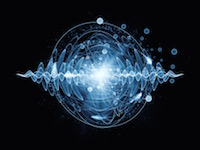- Speaker: Janghee Lee (POSTECH)
- Date: Thursday February 21, 2016 17:00
- Place: Jeongho Seminar Room
The band theory and the Landau-Ginzburg theory have been successful in classifying various quantum states of matter in condensed matter physics. However, the quantum Hall effect, which was discovered in 1980 by Klitzing and collaborators [1], could not be classified in terms of Bloch’s theorem and symmetry breaking. Before long, it was proved that the quantized Hall conductivity corresponds to a Chern number (TKNN number) [2]. After that, the topology has been studied widely in condensed matter physics and become another criterion for classifying materials in terms of topological invariant. Recently, it was suggested that another type of topological state can emerge in bilayer graphene (BLG) [3]. If the band gaps in two adjacent regions in BLG are produced by opposite-directional electric fields, topological one-dimensional (1-D) conducting channel emerges with a chiral nature at the boundary between the two gapped regions in the BLG. In this talk, after brief introduction to topology in condensed matter physics, we explain how the topological zero energy mode emerges in BLG. Then, we present the device fabrication procedure, which consists of novel stacking and transfer methods with sophisticated patterning sequence. Lastly, we show our recent results on transport measurements in BLG, which indicate the formation of a 1-D conducting channel between the two regions in gapped BLG.
